National Library of Ireland
The National Library of Ireland (NLI; Irish: Leabharlann Náisiúnta na hÉireann) is the Republic of Ireland's national library located in Dublin, in a building designed by Thomas Newenham Deane. The Minister for Culture, Heritage and the Gaeltacht is the member of the Government of Ireland responsible for the library.
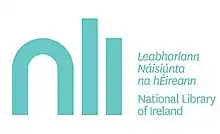 | |
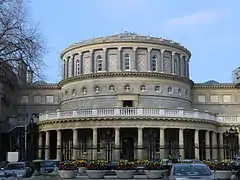 The front façade of the library, 2011 | |
| Country | Republic of Ireland |
|---|---|
| Established | 1877 |
| Location | Kildare Street, Dublin 2, Ireland |
| Collection | |
| Items collected | Books, Journals, Newspapers, Magazines, Manuscripts, Maps, Prints, Drawings, Printed music, Photographs, Ephemera and Websites |
| Size | estimated 8 million items |
| Legal deposit | Yes, since 1927 |
| Access and use | |
| Access requirements | Free. Open to all those who wish to consult the collections for material not otherwise available through the public library service or an academic library. |
| Other information | |
| Director | Dr. Sandra Collins |
| Website | www |
| Map | |
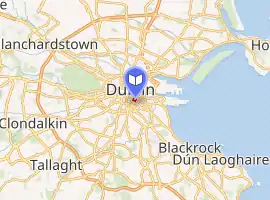
| |
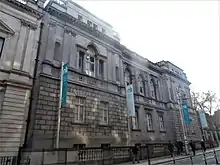
The mission of the National Library of Ireland is 'To collect, preserve, promote and make accessible the documentary and intellectual record of the life of Ireland and to contribute to the provision of access to the larger universe of recorded knowledge'
The library is a reference library and, as such, does not lend. It has a large quantity of Irish and Irish-related material which can be consulted without charge; this includes books, maps, manuscripts, music, newspapers, periodicals and photographs. Included in their collections is material issued by private as well as government publishers.
The Chief Herald of Ireland and National Photographic Archive are attached to the library. The library holds exhibitions and holds an archive of Irish newspapers. It is also the ISSN National Centre for Ireland. The library also provides a number of other services including genealogy.
The main library building is on Kildare Street, adjacent to Leinster House and the archaeology section of the National Museum of Ireland.
History
The National Library of Ireland was established by the Dublin Science and Art Museum Act 1877, which provided that the bulk of the collections in the possession of the Royal Dublin Society, should be vested in the then Department of Science and Art for the benefit of the public and of the Society, and for the purposes of the Act.
An Agreement of 1881 provided that the Library should operate under the superintendence of a Council of twelve Trustees, eight of whom were appointed by the Society and four by the Government; this Agreement also conferred on the Trustees the duty of appointing the officers of the Library. This arrangement remained in place until the library became an autonomous cultural institution in 2005.
After the foundation of the Irish Free State in 1924/5 the Library was transferred to the Department of Education under which it remained until 1986 when it was transferred to the Department of the Taoiseach. In 1927 the Library was granted legal deposit status under the Industrial and Commercial Property (Protection) Act 1927. In 1992 the Library transferred to the newly established Department of Arts, Culture and the Gaeltacht (now Culture, Heritage and the Gaeltacht)[1] and on 3 May 2005 became an autonomous cultural institution under the National Cultural Institutions Act 1997.
Collections
The National Library of Ireland houses collections of archival papers, including personal notes and work books, of the following eminent writers:
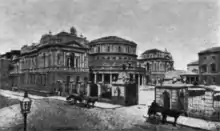
See also
- List of Ireland-related topics
- Thomas William Lyster, director of the library between 1895 and 1920.
- National Archives of Ireland
- National Photographic Archive
- Trinity College Library, Dublin
- UCD Library
References
- Taoiseach Albert Reynolds (20 January 1993). "S.I. No. 21/1993 - Arts and Culture (Transfer of Departmental Administration and Ministerial Functions) Order, 1993". Irish Statute Book. Retrieved 13 August 2018.
- Telford, Lyndsey (21 December 2011). "Seamus Heaney declutters home and donates personal notes to National Library". Irish Independent. Independent News & Media. Retrieved 21 December 2011.
External links
| Wikimedia Commons has media related to National Library of Ireland. |
- Official website
- National Library of Ireland Catalogue, including digitised material
- Sources: A National Library of Ireland database for Irish research
- National Library of Ireland on Facebook
- National Library of Ireland on Flickr
- National Library of Ireland on Twitter
- The National Library of Ireland's online exhibition, Yeats: The Life and Works of William Butler Yeats
- The National Library of Ireland's online exhibition, Discover your National Library
- The National Library of Ireland's online exhibition, The 1916 Rising: Personalities and Perspectives
- National Library of Ireland Collections on the European Library Portal